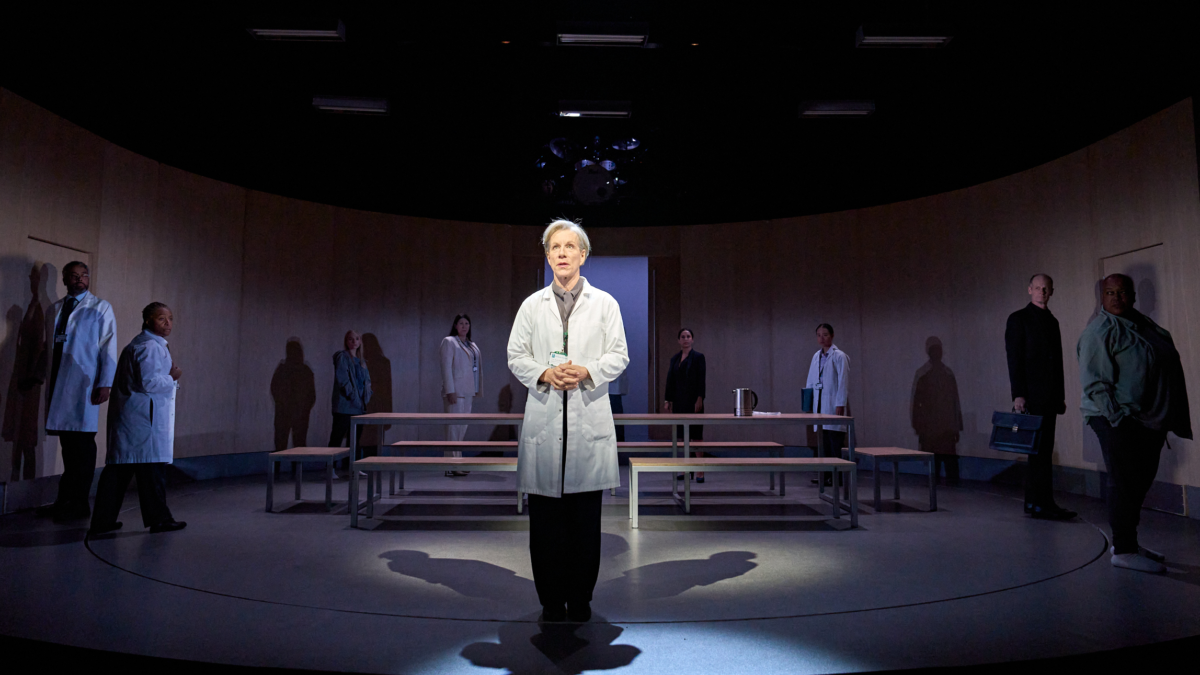By Mimi Nation-Dixon.
Nora: A Doll’s House’ is a play that explores feminist themes through the life of protagonist Nora, in 1918, 1960 and 2018. Reframing Henrik Ibsen’s brutal portrayal of womanhood in his 1879 play, following the same protagonist through different time periods prompts audience members to question how far we have really come in terms of equality.
At first, I was sceptical as to how this play would maintain relevance in a crowded Student Theatre scene; plays centred on feminism are not short of supply in Durham. Yet, after seeing the artistic promotion for this play – I was intrigued and excited at the prospect of a fresh outlook and perspective. Needless to say, it did not disappoint; a powerhouse of creatives behind the scenes, led by director Jennifer Lafferty, and a dedicated cast, ensured that the performance and story told was relevant, inspiring and honest.
The staging, although simple, proved to be highly effective – the clever use of lighting ensured that the sparsity of the set never felt barren or bare – it felt lived in, Nora’s home. Lafferty must be commended for her clear and methodical approach in terms of staging what is a very complex play in a small venue. City Theatre has a small and compact stage – a play like Nora would have naturally lent itself to a bigger stage which would have allowed the actors to be freer in their movement. Nonetheless, tactical lighting and staging ensured that the limits placed on the production by the venue were minimal – and for this, the production team must be saluted.
The whole cast were, with no doubt, strong actors all with a natural flair for storytelling. I would have liked to see more continued characteristics in the characters in the different time periods; this would have reinstated that they are indeed the same people, albeit with differing limiting contextual factors – this would have enhanced the themes of the production, at times it was too easy to forget that it was the same character of Nora and Thomas in 1918, the sixties, and 2018.
In a cast of strong actors, it is always hard to pick out particular performances which resonate. However, I must commend both Honor Calvert and Tom Pyle – dynamic, expressive and electric, they were able to ensure consistent ‘light and shade’ within their roles, creating an artful performance which didn’t fall into the trap of being just one dimensional. Emotion never felt forced. They both trusted the script and let the lines lead their performance, not visa versa. A special mention must also go to Nathan Jarvis who executed his role of Daniel with such conviction – allowing the audience the relief of a laugh in what was an emotionally intense story.
There were moments of the play which could have been executed better, such as the ‘slap’ and the sound effect of the baby crying – in a hyper naturalistic play, these moments were somewhat out of place and forced. However, the clever staging of the dance scene was artfully constructed and executed with slick professionalism.
The final scene is a moment all the cast and crew should be immensely proud of – the astounding performances and clear and clever direction really leaves no room for criticism. Simultaneous with the lights, the Noras’ exhalation at the end of the play serving as a neat and powerful finish to a strong production.
I mentioned how I was sceptical of the relevance of this play in a crowded student theatre scene. My worries were proved wrong, in the most wonderful of ways. Through thoughtful staging and clear direction – Jennifer Lafferty, assisted by Julia Kennerley and Abby Greenlaigh, managed to ensure that the characters remained truthful and real – ensuring the story remained raw and powerful.


